In today’s car community, the term “hybrid” designates the vehicle equipped with an internal combustion engine paired with electric motors and a battery pack, designed to achieve better fuel economy and less emissions. However, in the ’60s and ’70, “hybrid” had a very different meaning. It was a common term for sports and luxury cars, which were designed and manufactured in Europe but used American engines and drive trains. In those days, numerous small companies had capacities to produce cars but were not capable of constructing their own engines, which was always a lengthy and expensive process. In a relentless quest for speed and performance, those brands turned to big American companies known for their selection of powerful V8 engines. For example, using a Chevrolet small-block V8, Ford’s 289 V8, or Chrysler’s Hemi was the perfect way of obtaining a fantastic powerplant for a reasonable sum. Those US-made engines were not just affordable but sometimes more powerful than comparable Ferrari or Maserati units, and last but not least, more durable and easier to maintain. So, it is no surprise that the sports car market of the period was full of various American-European “hybrids.”
One such company was Automobili DeTomaso. As with any Italian sports car company, this was also started with one man’s vision, which stayed at its helm until the end. That man was Alejandro DeTomaso, Italian by nationality and Argentinian by birth; Alejandro moved to Italy in 1955 and immediately got himself involved with motorsports. As any ambitious car-crazed young man, his dream was to make a sports car under his own name, and in 1963, the first road-going DeTomaso was introduced and called Vallelunga (after the Italian race track). It used a modest, four-cylinder engine from Ford Cortina but featured innovative design and chassis construction, making it pretty capable and successful in competition.
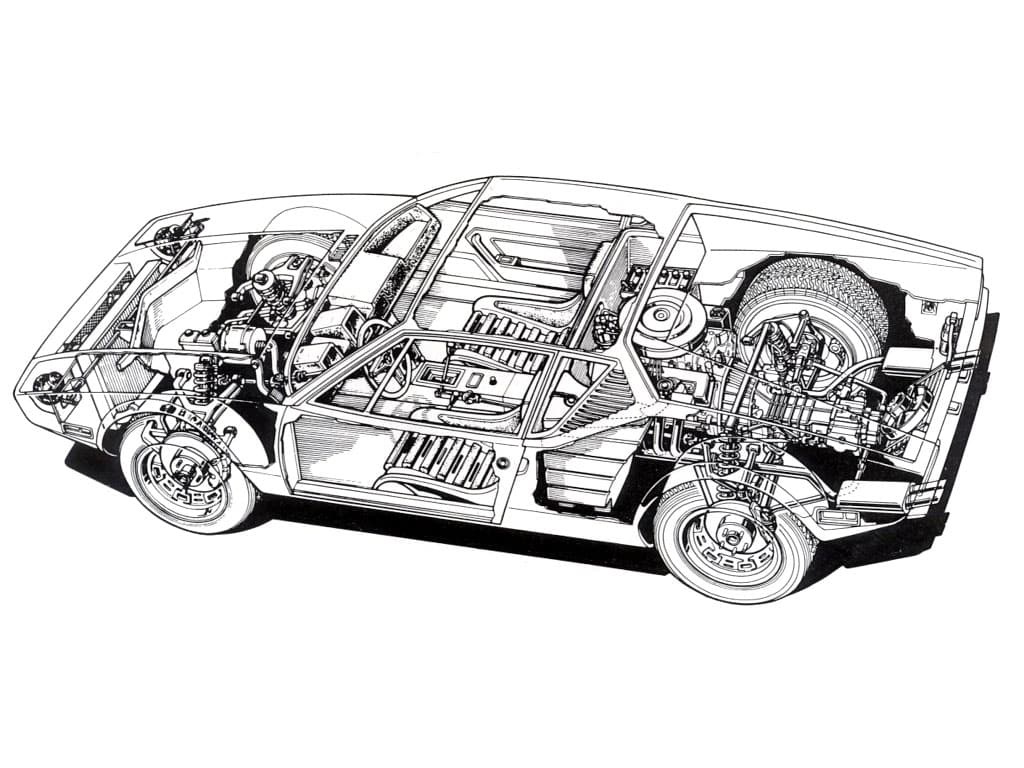
Even though Vallelunga didn’t sell in big numbers, it generated enough attention that DeTomaso managed to find enough investors for his next project – the Mangusta. Introduced in 1966, Mangusta was a very capable and contemporary sports car with a centrally positioned Ford 289 V8 (similar to the one used in Shelby Cobra), cool design, and impressive performance. But problematic handling and high price limited its appeal, and production ended in 1971 after only around 400 examples were made. The Mangusta was also famous for its butterfly-type engine cover.
But, the Mangusta was only the beginning, and Alejandro DeTomaso learned a valuable lesson from that project which helped him prepare for his next venture, which turned out to be the most successful in his career. First of all, he hired American-born but working in Italy, car designer named Tom Tjaarda. Tjaarda worked at the famous Ghia design studio at the moment and was given the assignment of designing a new DeTomaso. Second, DeTomaso invested heavily in innovative steel monocoque construction, which was far better than the steel backbone type that Magusta had. With a new design, advanced chassis, and 351 Ford V8 engine with 330 hp, the car was ready for its 1971 debut. Alejandro named it Pantera, which sounded very aggressive and cool but suited the design ideally.
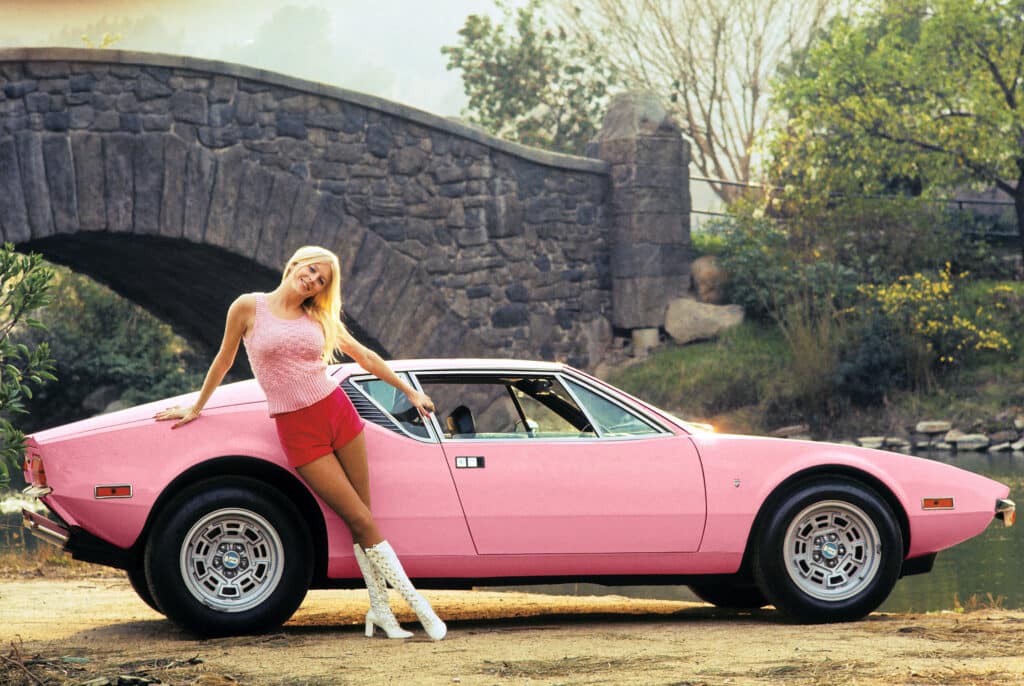
Even though the early ’70s were full of exciting sports cars, DeTomaso Pantera was very well received by the sports car community. Compared to Ferrari or Maserati, Pantera was more advanced, faster, and could be serviced by any local mechanic due to the simple but effective US-made V8 engine. With the price somewhat lower than the competitors, DeTomaso was swept with the orders. With 5.5 seconds to 60 mph and about 170 mph top speed, Pantera was also amongst the fastest cars of its era. The 5-speed manual transaxle gearbox and four-wheel disc brakes completed the picture.

Immediately after the official release, Ford Motor Company took notice of a small Italian brand that was using their engines. Through his connection in the industry, Alejandro managed to get a meeting with Ford’s representatives which resulted in a very exclusive deal. Ford will continue supplying the engines and components, and Panteras will be sold in Lincoln-Mercury dealerships as Ford’s competitor to Corvette, Ferrari, or Porsche. It meant that Pantera would be marketed to a broader audience, and between 1972 and 1975, more than 5,500 cars were sold in America alone. Even though the DeTomaso was an Italian brand, the popularity and recognition were first earned in America and then at home. Due to its design and performance, DeTomaso Pantera was popular with wealthy sports car fans of the era, and numerous celebrities had one. Elvis Presley was amongst them, and he famously owned a yellow 1974 with an unusual bullet hole on the dashboard. Apparently, Elvis shot the car in anger after it failed to start one morning.
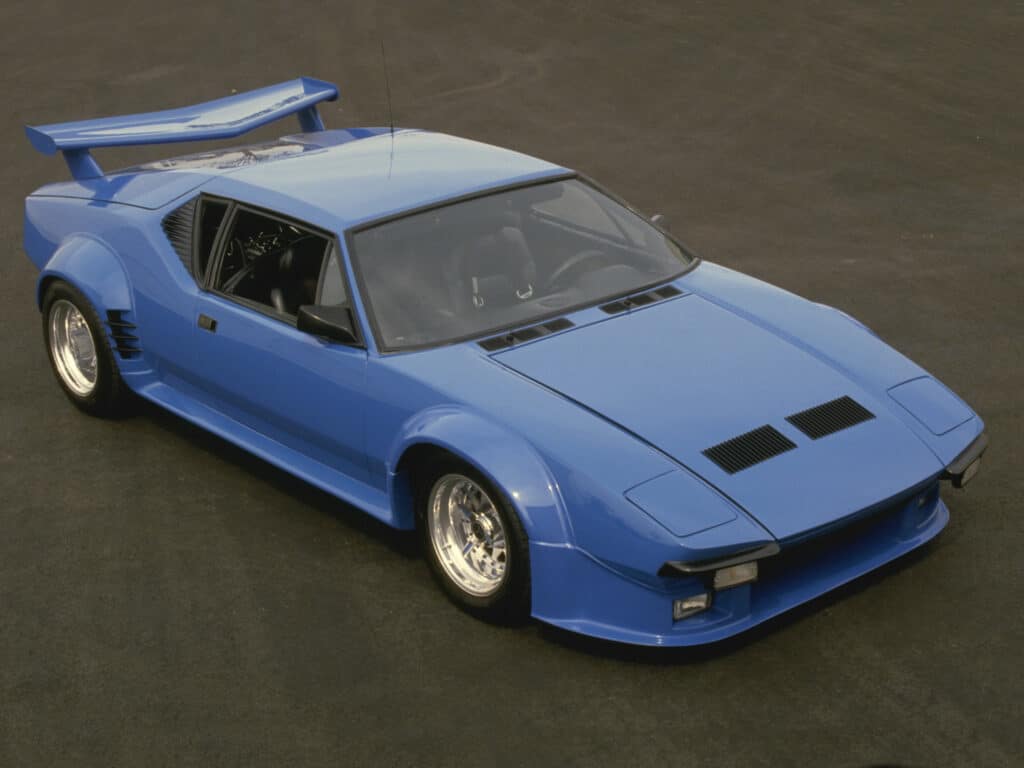
Unfortunately, in 1975 the deal with Ford ceased, and the company announced that its factories would not be making the famous 351 Cleveland engine. For most people, this would mean the death of the Pantera. Still, Alejandro decided to continue the production, concentrating on the European market and sourcing the same 351 Cleveland engines from Ford Australia, where it was still assembled.
Sales were slow from 1975 to 1980, but Pantera still offered significant performance even though most competitors had smaller horsepower ratings.
Even though Alejandro DeTomaso acquired the Maserati company in 1975 and got involved with revitalizing that famous brand, he never forgot about Pantera. In 1980, a refreshed model called GT5 was released. Even though it looked like the original Pantera but with a massive body kit and spoilers, the chassis was totally revised, engines were upgraded (with 350 hp), and numerous details were changed. The GT5 was the base model, but the company also offered a GT5-S which had some changes and a more luxurious interior. The revised Pantera soldier on through the 80s even though the numbers of produced examples have been pretty low. After 1975, DeTomaso lost the US market, and private dealers sold “gray imports,” which meant that very few cars were actually sold there.
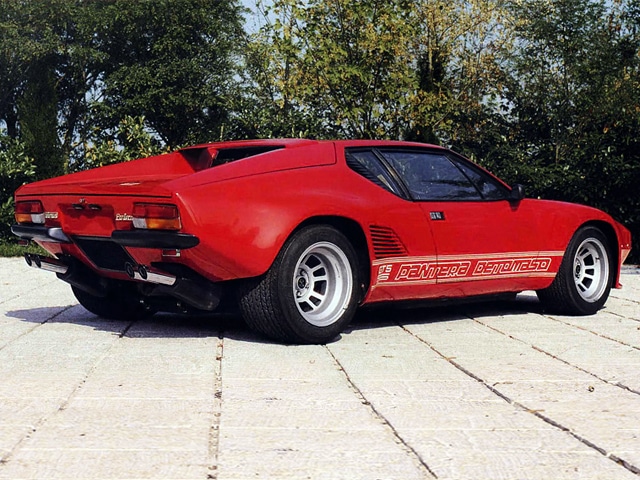
By 1990, the Pantera was terribly outdated, but it was still not ready for retirement. The Pantera 90Si model was introduced with another thorough restyling by famous Marcello Gandini and with an all-new 302 V8 from Ford with revised cylinder heads and fuel injection. Amazingly, Gandini made it look aggressive and almost contemporary, and the new powerplant gave it higher power ratings of 380 hp and slightly better acceleration. However, it was obvious that after nearly 20 years on the market and two massive redesigns, Pantera was ready for history books. The production officially ceased in 1992 after more than 7,260 cars were made. For a small company such as DeTomaso and the difficult circumstances it encountered over the years, this car was a significant success and one of the greatest (and coolest) American-Italian hybrids ever produced.
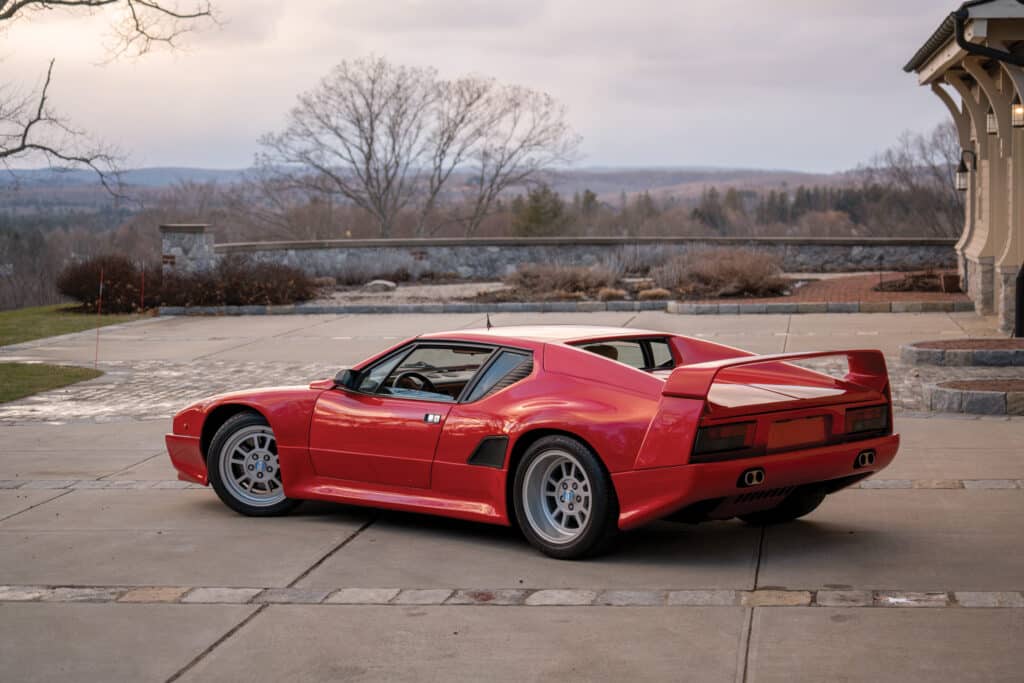
However, although the Pantera had a long and dynamic run, there is one chapter of its life that is rarely mentioned – racing. Alejandro DeTomaso was a racer in his youth and wanted his car to have a competition career as well. In the early ’70s, DeTomaso Pantera was homologated for Group 3 and Group 4 FIA championships. According to FIA’s propositions, cars needed to be based on production examples with some modifications to the engine, chassis, and suspension.
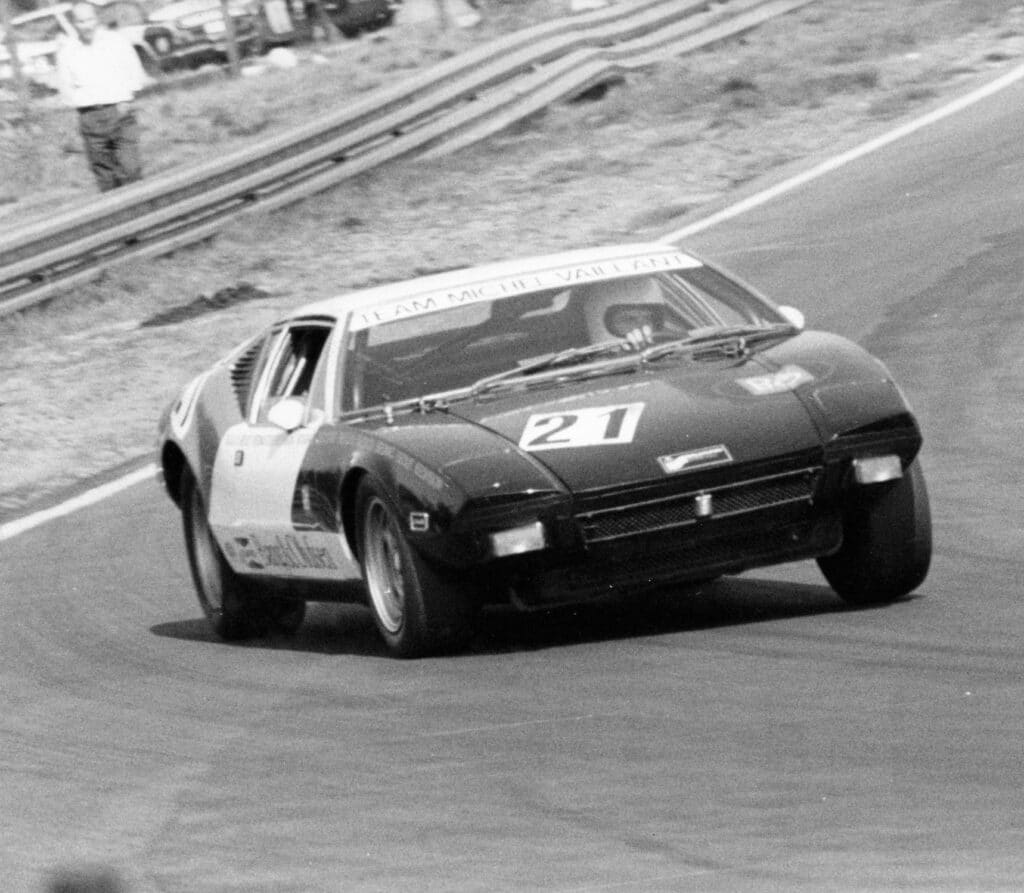
Using Ford performance parts, Italian mechanics managed to extract close to 500 hp from 351 Cleveland V8 and gave it an amazing performance. The Group 3 and Group 4 cars had a solid racing career and remained competitive for most of the 70s, raced mainly by private teams and gentleman racers in Europe and America. There was also a Group 5 racing version of Pantera, which raced primarily in the American IMSA championship in the late 70s. The Group 5 rules allowed extensive modifications to the original design, but those Panteras were rare and unsuccessful.





